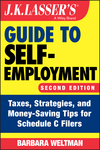Answered: February 4, 2014 8:30 am
I made an unsecured loan to a corporation that went under and dissolved. How do I handle my loss?
First, you must determine whether this was a business or nonbusiness bad debt. A business bad debt is fully deductible as an ordinary loss; a nonbusiness bad debt is treated as a short-term capital loss deductible only as an offset to capital gains and up to $3,000 of ordinary income, with excess amounts carried forward. A business bad debt usually arises in the course of operating a business, such as loans made to suppliers, credit sales to customers, and loans to the business itself. But your ownership status affects the classification of the debt. For example, if you were a shareholder in the corporation that defaulted on your loan, the default is a business bad debt if you made the loan to protect your salary but it’s a nonbusiness bad debt if you made the loan to protect your investment in the corporation. Tricky? Yes, so talk with a tax advisor.
Placed in service
The time when a depreciable asset is ready to be used. The date fixes the beginning of the depreciation period.



